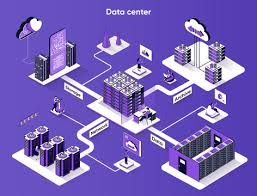
In the interconnected world of modern technology, networks serve as the backbone for communication, commerce, and information exchange. However, this connectivity also brings a range of security risks that can compromise data integrity, privacy, and operational efficiency. Understanding these security risks is essential for developing robust strategies to protect network infrastructure and sensitive information.
Common Security Risks in Networking
1. Malware
Malware, short for malicious software, is designed to infiltrate, damage, or disrupt computer systems. It includes viruses, worms, trojans, ransomware, and spyware. Malware can enter a network through email attachments, downloads, or compromised websites.
- Viruses: Self-replicating programs that attach themselves to legitimate files and spread to other files and systems.
- Worms: Standalone malware that replicates itself to spread across networks without user intervention.
- Trojans: Disguised as legitimate software, trojans allow cybercriminals to access and control infected systems.
- Ransomware: Encrypts data on a victim’s system and demands a ransom for decryption.
- Spyware: Covertly collects information about a user or organization without their knowledge.
2. Phishing Attacks
Phishing attacks involve tricking individuals into revealing sensitive information, such as usernames, passwords, or credit card details. Attackers typically use emails, instant messages, or fake websites that appear legitimate to deceive users. Phishing is often the initial step in larger cyberattacks, including identity theft and financial fraud.
3. Denial of Service (DoS) Attacks
DoS attacks aim to disrupt the normal functioning of a network, service, or website by overwhelming it with a flood of traffic or requests. A more sophisticated variant, Distributed Denial of Service (DDoS), involves multiple compromised systems attacking a target simultaneously. These attacks can cause significant downtime, financial loss, and damage to an organization’s reputation.
4. Man-in-the-Middle (MitM) Attacks
In a MitM attack, a cybercriminal intercepts communication between two parties to steal or alter the transmitted information. This can occur on unsecured networks, such as public Wi-Fi, where attackers can eavesdrop on or manipulate data exchanges.
5. Insider Threats
Insider threats arise from individuals within an organization who have authorized access to its network and data. These threats can be intentional, such as an employee stealing sensitive information, or unintentional, such as an employee accidentally leaking confidential data. Insider threats are challenging to detect and can cause significant harm.
6. Unpatched Software and Vulnerabilities
Software vulnerabilities are flaws or weaknesses in applications, operating systems, or network devices that can be exploited by attackers. Failing to apply patches and updates in a timely manner leaves networks exposed to known exploits, increasing the risk of a breach.
7. Weak Passwords and Authentication
Using weak or easily guessable passwords is a common security risk. Cybercriminals use techniques like brute force attacks, where they systematically try all possible password combinations, to gain unauthorized access to accounts. Inadequate authentication mechanisms, such as single-factor authentication, also increase the risk of unauthorized access.
8. SQL Injection Attacks
SQL injection NetworkingArchive target web applications by inserting malicious SQL code into input fields, allowing attackers to manipulate the database. This can lead to unauthorized access, data theft, or data corruption. Web applications with poorly sanitized input fields are particularly vulnerable to SQL injection.
Strategies for Mitigating Security Risks
1. Implement Strong Authentication and Access Controls
- Multi-Factor Authentication (MFA): Require multiple forms of verification for access, such as a password and a fingerprint or a one-time code.
- Role-Based Access Control (RBAC): Limit access to network resources based on user roles and responsibilities.
2. Regular Software Updates and Patch Management
- Automated Updates: Enable automatic updates for operating systems and applications to ensure timely patching of vulnerabilities.
- Patch Management: Establish a formal process for identifying, testing, and deploying patches across the network.
3. Network Security Tools
- Firewalls: Implement firewalls to monitor and control incoming and outgoing network traffic based on predetermined security rules.
- Intrusion Detection and Prevention Systems (IDPS): Deploy IDPS to detect and respond to potential threats in real-time.
- Antivirus and Anti-Malware: Use comprehensive antivirus and anti-malware solutions to detect and remove malicious software.
4. User Education and Training
- Phishing Awareness: Educate employees about phishing tactics and encourage them to report suspicious emails.
- Security Best Practices: Conduct regular training sessions on security best practices, such as creating strong passwords and recognizing social engineering attempts.
5. Data Encryption
- Encryption: Encrypt sensitive data both in transit and at rest to protect it from unauthorized access and interception.
6. Regular Security Audits and Assessments
- Vulnerability Scanning: Perform regular scans to identify and remediate security weaknesses.
- Penetration Testing: Conduct periodic penetration tests to simulate attacks and evaluate the effectiveness of security measures.
Conclusion
Networking security risks are ever-evolving and pose significant challenges to organizations and individuals alike. By understanding common threats such as malware, phishing, DoS attacks, and insider threats, and implementing robust security strategies, it is possible to protect network infrastructures and sensitive information effectively. Continuous vigilance, education, and proactive security measures are essential for safeguarding the digital frontier against malicious actors